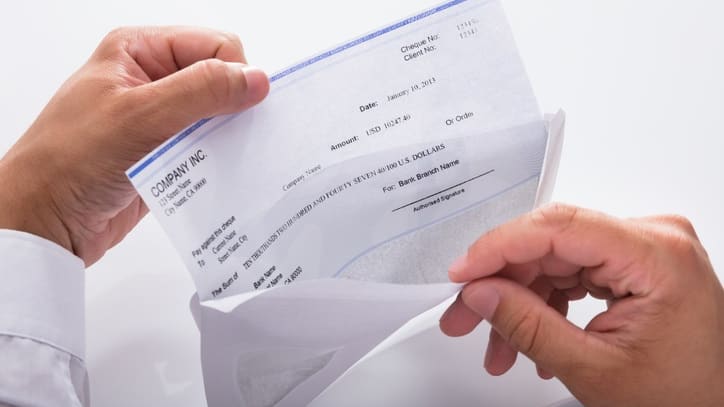Viewpoint: Using Paper Checks for 401(k) Cash-Outs Doesn't Make Sense
Distributions of $1,000 or less can be rolled over into an IRA

Does your retirement plan have a mandatory cash-out provision for account balances of $5,000 or less, where terminated employees automatically receive a distribution unless they elect otherwise? This provision, when properly administered, greatly minimizes the number of missing participants in a plan, since people are less likely to remember that they have $1,000 in a retirement account than when they have $100,000. Additionally, cleaning up small balance accounts increases a plan's average account balance size, making the plan more attractive to recordkeepers from a pricing perspective.
While small balance cash-out provisions are a good idea, many plan sponsors sabotage the potential benefits by also including a provision that distributes balances of $1,000 or less to participants via paper checks. Here's why this is a terrible idea:
- Participants with balances of $1,000 or less are the most likely to be missing (as individuals with more money tend to keep their addresses updated), so a significant number of these checks are returned to the plan.
- Generation Z people—the ones who are more likely to be the owners of these small balance accounts—are less accustomed to receiving paper checks (I can count on one hand the number of paper checks I've received in the last few years, and I'm 51).
- With so much junk mail, there is the possibility that a check could simply be discarded.
- The paper check is subject to ordinary income taxes (20 percent of which is withheld up front), plus a 10 percent tax penalty if the recipient is under 59½ (most are), making that small check even smaller.
[SHRM members-only toolkit: Designing and Administering Defined Contribution Retirement Plans]
Plan Sponsor Inertia
So why do plan sponsors do this? Well, many years ago, the only way to cash out balances of $5,000 or less at termination of employment was to issue checks. But that changed in 2005, when the IRS provided guidance making it mandatory for any automatic cash-outs greater than $1,000, but less than $5,001, to be rolled over to an individual retirement account (IRA). Unfortunately, many plan sponsors did not realize that distributions of $1,000 or less could also be rolled over, provided that the IRA provider would accept these rollovers (note that some plan sponsors responded to this new guidance by lowering their cash-out thresholds from $5,000 to $1,000, but they were in the minority). So, while plan sponsors rolled over $1,001 to $5,000 balances to an IRA upon employment termination, they continued to issue paper checks for balances of $1,000 or less.
Fast forward to 2019, and, due to inertia, most plan sponsors are still issuing paper checks for cash-outs of $1,000 or less. And, if a plan's current IRA rollover provider does not accept rollovers of $1,000 or less, I recommend finding another IRA rollover provider who does.
Michael A. Webb is vice president at retirement plan advisory firm Cammack Retirement Group. © 2019 Cammack Retirement Group Inc. This article was originally posted on the firm's website on Oct. 17, 2019. All Rights Reserved. Republished with permission.
Advertisement
An organization run by AI is not a futuristic concept. Such technology is already a part of many workplaces and will continue to shape the labor market and HR. Here's how employers and employees can successfully manage generative AI and other AI-powered systems.
Advertisement


